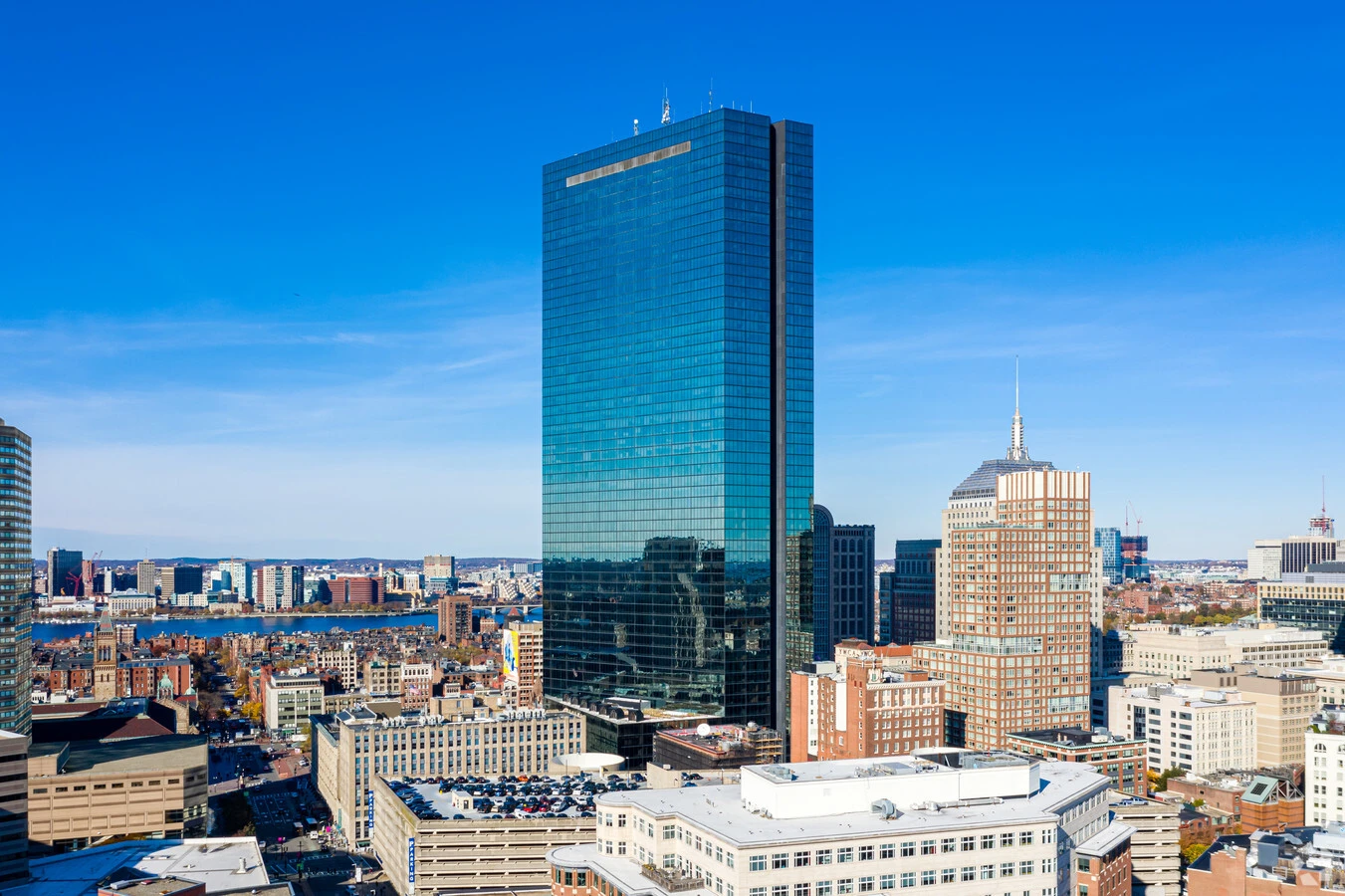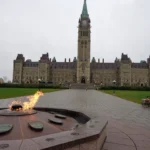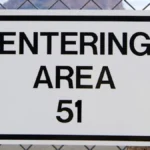
Welcome to the world of architectural marvels and urban landmarks! Today, we embark on a journey to explore the iconic John Hancock Tower, a towering symbol of innovation and elegance nestled within the bustling cityscape of Boston. With its soaring silhouette and rich history, this magnificent skyscraper captivates the imagination and leaves an indelible mark on the skyline. Join us as we delve into the fascinating details and unique features that define this legendary structure, uncovering stories of engineering ingenuity, cultural significance, and timeless beauty along the way. Step into the world of the John Hancock Tower and prepare to be inspired by its towering presence and enduring legacy.
Height Hero: The John Hancock Tower, towering at a staggering 1,000 feet (314 meters) and spanning 100 stories, held the prestigious title of the tallest building in the United States upon its completion in 1976. Located in the heart of Boston’s historic Back Bay neighborhood, this architectural marvel stands as a testament to modern engineering and design prowess. Its sleek, minimalist silhouette dominates the city skyline, commanding attention from afar and drawing visitors from around the globe to marvel at its grandeur.
Diagonal Domination: A pioneering feat in skyscraper engineering, the John Hancock Tower boasts a revolutionary diagonal bracing system that set it apart from its contemporaries. This innovative structural design, a first for a building of its size, not only provided unparalleled stability and strength but also allowed for a lighter, more open interior space. The utilization of diagonal bracing marked a significant departure from conventional vertical supports, enabling architects to achieve a daring, forward-looking aesthetic while maintaining structural integrity.
Window Woes: In its early years, the John Hancock Tower faced a peculiar challenge stemming from its distinctive reflective glass windows. The intense sunlight reflecting off the building’s facade posed a hazard to pedestrians and nearby vegetation, causing discomfort and damage. To address this issue, a solution was implemented in 1974, tinting the windows to mitigate the glare and alleviate the adverse effects of the sun’s rays. This intervention not only improved the comfort and safety of those in the vicinity but also enhanced the tower’s visual appeal.
Observatory Altitude: Perched atop the 97th floor of the John Hancock Tower, the observatory offers an unparalleled vantage point from which to behold the panoramic splendor of Boston and its surroundings. At an elevation of 604 feet (184 meters) above ground level, visitors are treated to breathtaking views that stretch across the cityscape, encompassing iconic landmarks such as Fenway Park, the Charles River, and the historic neighborhoods of Beacon Hill and Back Bay. From this lofty vantage point, one gains a newfound appreciation for the scale and beauty of the urban landscape below.
Celestial Signature: A distinctive feature of the John Hancock Tower is its crowning beacon light, which serves as both a navigational aid and a striking visual emblem. Perched atop the tower’s pinnacle, this beacon casts its luminous glow across the Boston skyline, illuminating the night sky with a radiant display of Morse code. Through a series of rhythmic flashes, the beacon spells out the tower’s namesake, “H-A-N-C-O-C-K,” in a timeless tribute to the building’s identity and legacy. This celestial signature not only enhances the tower’s visibility but also imbues it with a sense of dynamic energy and purpose.
Construction Champions: The realization of the John Hancock Tower was made possible through the visionary initiative of the John Hancock Mutual Life Insurance Company, which spearheaded its development from conception to completion. Groundbreaking commenced in 1968, marking the onset of a monumental construction endeavor that would span nearly a decade. With a total cost exceeding $200 million (equivalent to $1.2 billion today), the project exemplified a commitment to excellence and innovation, setting new benchmarks in architectural achievement and urban development.
Windy Wobble: Designed to withstand the formidable forces of nature, the John Hancock Tower boasts a remarkable capacity to flex and sway in response to turbulent winds. This dynamic resilience is facilitated by its flexible structural framework, which allows the building to oscillate up to 7 inches (18 centimeters) during periods of high wind velocity. Despite the perceptible movement experienced by occupants on upper floors, this architectural marvel remains steadfast and secure, ensuring the safety and comfort of its inhabitants even amidst nature’s fury.
Sky High Steps: For the adventurous and fitness-minded, scaling the heights of the John Hancock Tower presents an exhilarating challenge in the form of 78 flights of stairs that lead to its summit. Ascending these vertiginous steps offers a rigorous cardiovascular workout while affording glimpses of the building’s interior architecture and panoramic vistas through strategically placed windows. Though demanding in nature, the ascent rewards intrepid climbers with a profound sense of accomplishment and a unique perspective on the tower’s monumental stature.
Pane Perfection: The exterior facade of the John Hancock Tower is adorned with over 10,000 meticulously crafted panes of tinted glass, each contributing to its distinctive aesthetic and functional attributes. These specialized glass panels serve multiple purposes, including thermal insulation, solar control, and aesthetic enhancement. Their tinted finish not only imparts a sleek, contemporary appearance to the building but also helps regulate internal temperatures and reduce energy consumption, thereby promoting sustainability and environmental stewardship.
Wind Wizard: Beyond its role as a structural stabilizer, the diagonal bracing system of the John Hancock Tower serves as a strategic ally in mitigating the adverse effects of wind shear on its uppermost levels. By dispersing wind forces across its framework in a controlled manner, this innovative design feature minimizes the perceptible swaying and oscillation experienced by occupants on higher floors. As a result, the tower maintains a sense of tranquility and stability, fostering an environment conducive to productivity, relaxation, and well-being.
Bird Brain Blues: To safeguard avian wildlife from the hazards of collisions with the tower’s expansive glass facade, subtle markings are strategically incorporated onto the surface of the windows. Imperceptible to human eyes but visible to birds, these intricate patterns serve as a deterrent, preventing potential collisions and minimizing harm to migratory species traversing the urban landscape.
Celestial Cinema: Within the confines of the John Hancock Tower’s observatory, visitors are treated to an immersive cinematic experience that transcends conventional boundaries. Equipped with state-of-the-art holographic technology, the observatory’s theater brings Boston’s rich history to life through captivating visuals and narrated storytelling. From the city’s colonial origins to its modern-day achievements, this multimedia spectacle offers a panoramic journey through time, inspiring wonder and appreciation for Boston’s enduring legacy.
Thrilling Thrill Ride: For adrenaline enthusiasts seeking an exhilarating adventure, the John Hancock Tower’s observatory offers a unique attraction known as the “Skywalk” experience. Spanning a series of enclosed glass sections that extend outward from the building’s facade, this vertigo-inducing walkway offers unobstructed views of the city below, allowing visitors to experience the sensation of walking on air. With each step, thrill-seekers are immersed in a breathtaking panorama that encapsulates the essence of urban life from a lofty perspective.
Public Art Paradise: The John Hancock Tower serves as a canvas for artistic expression, featuring several notable installations that enrich the urban landscape and engage the community. Among these is a striking 12-foot bronze sculpture created by renowned artist Harry Bertoia, whose intricate forms and textures evoke a sense of dynamism and fluidity. Positioned within the tower’s public plaza, this sculptural masterpiece invites contemplation and dialogue, embodying the spirit of creativity and cultural enrichment.
Cinematic Cameo: As a prominent landmark on the Boston skyline, the John Hancock Tower has garnered widespread recognition through its appearances in film and popular media. From gritty crime dramas like “The French Connection” to high-stakes thrillers such as “21,” the tower’s iconic silhouette has served as a backdrop for cinematic narratives that capture the essence of urban intrigue and sophistication. Its distinctive presence lends an air of authenticity and intrigue to cinematic portrayals of the city, becoming an integral part of its cultural identity.
Vertical Village: Beyond its architectural significance, the John Hancock Tower serves as a vibrant hub of activity and community, housing a diverse array of residential, commercial, and retail spaces within its soaring confines. From luxurious condominiums perched atop the skyline to bustling office suites that pulse with productivity, the tower fosters a dynamic interplay of urban life, offering residents and visitors alike a seamless integration of living, working, and leisure amenities.
Symbolic Significance: Embodying the aspirations and identity of the city it calls home, the John Hancock Tower has transcended its physical dimensions to become an enduring symbol of Boston’s spirit and resilience. With its gleaming facade and distinctive silhouette, the tower stands as a beacon of progress and innovation, a testament to the city’s unwavering commitment to excellence and forward-thinking urban development. Its presence on the skyline serves as a source of inspiration and pride for residents and visitors alike, symbolizing Boston’s indomitable spirit and enduring legacy.
Cleaning Crew Climbers: Maintaining the pristine appearance of the John Hancock Tower’s exterior is no small feat, requiring the expertise and precision of a dedicated team of window washers. Suspended from a network of gondolas that traverse the building’s facade, these fearless individuals embark on a vertiginous journey to ensure that every pane of glass gleams with brilliance. Their meticulous attention to detail and unwavering dedication uphold the tower’s aesthetic standards, preserving its iconic status as a gleaming jewel in the Boston skyline.
High-Speed Haven: Navigating the vertical expanse of the John Hancock Tower is a seamless and swift experience, thanks to its fleet of high-speed elevators that whisk occupants to their destinations with unparalleled efficiency. Capable of reaching speeds of up to 1,800 feet per minute (549 meters per minute), these state-of-the-art conveyances offer a smooth and exhilarating ride that defies the constraints of gravity. Whether ascending to the observatory for panoramic views or descending to street level for urban adventures, passengers are transported with effortless grace and speed.
Weather Woes: Amidst the ambitious construction of the John Hancock Tower, progress was briefly impeded by external factors beyond human control. In 1970, a major concrete strike brought work on the project to a temporary halt, disrupting timelines and necessitating strategic negotiations to resolve labor disputes. Despite this setback, the tower’s development persevered, ultimately overcoming adversity to emerge as a triumphant testament to human ingenuity and resilience.
Patriotic Pride: On patriotic holidays, the John Hancock Tower pays homage to its American heritage by illuminating its beacon light in the colors of the nation’s flag: red, white, and blue. This symbolic gesture serves as a visible expression of solidarity and patriotism, uniting residents and visitors in celebration of shared values and ideals.
Local Legend: Affectionately known as “The Big Blue Bottle” by some Boston residents, the John Hancock Tower has earned a place in the city’s collective consciousness through its distinctive shape and azure hue. This endearing moniker reflects the tower’s unique identity and its enduring impact on the urban landscape, evoking a sense of familiarity and affection among those who call Boston home.
Windy Wobble: Designed to withstand the formidable forces of nature, the John Hancock Tower boasts a remarkable capacity to flex and sway in response to turbulent winds. This dynamic resilience is facilitated by its flexible structural framework, which allows the building to oscillate up to 7 inches (18 centimeters) during periods of high wind velocity. Despite the perceptible movement experienced by occupants on upper floors, this architectural marvel remains steadfast and secure, ensuring the safety and comfort of its inhabitants even amidst nature’s fury.
Sky High Steps: For the adventurous and fitness-minded, scaling the heights of the John Hancock Tower presents an exhilarating challenge in the form of 78 flights of stairs that lead to its summit. Ascending these vertiginous steps offers a rigorous cardiovascular workout while affording glimpses of the building’s interior architecture and panoramic vistas through strategically placed windows. Though demanding in nature, the ascent rewards intrepid climbers with a profound sense of accomplishment and a unique perspective on the tower’s monumental stature.
Pane Perfection: The exterior facade of the John Hancock Tower is adorned with over 10,000 meticulously crafted panes of tinted glass, each contributing to its distinctive aesthetic and functional attributes. These specialized glass panels serve multiple purposes, including thermal insulation, solar control, and aesthetic enhancement. Their tinted finish not only imparts a sleek, contemporary appearance to the building but also helps regulate internal temperatures and reduce energy consumption, thereby promoting sustainability and environmental stewardship.
FAQs:
How tall is the John Hancock Tower and what was its claim to fame?
The John Hancock Tower stands at 1,00 stories (314 meters) tall. It held the prestigious title of the tallest building in the United States from 1970 until the Sears Tower (now Willis Tower) surpassed it in 1973. Though no longer the tallest, the John Hancock Tower remains a prominent feature of the Boston skyline and the fourth-tallest building in Chicago.
What is the significance of the John Hancock Tower’s diagonal bracing system?
The John Hancock Tower’s diagonal bracing system was a groundbreaking innovation for skyscrapers of its size. This unique design utilizes a network of diagonal beams along the exterior of the building. This provided several advantages:
Lighter and More Open Design: The diagonal braces offered the necessary support without requiring an excessively thick central core, allowing for more open floor plans and larger windows.
Enhanced Structural Integrity: The diagonal distribution of forces throughout the building increased its stability against wind and seismic activity.
Reduced Wind Shear: The bracing system also helped to counteract wind shear, minimizing the swaying sensation experienced on higher floors.
What is the John Hancock Observatory famous for, and what can visitors expect?
The John Hancock Observatory, perched on the 97th floor of the tower, is a major tourist attraction offering stunning panoramic views of Boston. Visitors can expect:
Breathtaking Vistas: The observatory boasts 360-degree views of the city, encompassing iconic landmarks like Fenway Park and the Boston Harbor. From 604 feet (184 meters) above the ground, visitors can get a unique perspective of the city’s sprawl and historical sites.
Interactive Exhibits: The observatory features various exhibits showcasing Boston’s rich history and culture. These exhibits may include holographic displays, touchscreens, and informative displays.
Thrilling Skywalk: The observatory’s signature attraction is the “Skywalk,” enclosed glass sections that extend outward from the building, allowing visitors to walk on air and experience unparalleled city views with a touch of adrenaline.
What are some of the sustainable features incorporated into the John Hancock Tower?
As one of the first skyscrapers to prioritize energy efficiency, the John Hancock Tower incorporates several sustainable design elements:
Double-Glazed Window System: This system helps to insulate the building, reducing heating and cooling costs.
Computerized Lighting Control System: This system automatically adjusts lighting levels based on ambient light, minimizing unnecessary energy consumption.
Reflective Glass: While it caused some initial issues, the tinted reflective glass helps to regulate interior temperatures by reflecting sunlight.
What is the nickname for the John Hancock Tower, and why?
The John Hancock Tower is affectionately nicknamed “The Big Blue Bottle” by some Boston residents. This nickname likely stems from the building’s distinctive shape and its prominent use of blue tinted glass. The cylindrical design with a flat top somewhat resembles a giant blue bottle, particularly from certain angles and distances.









